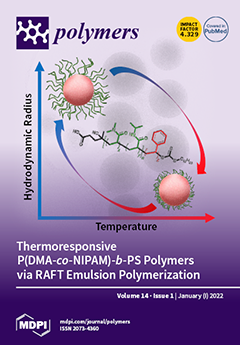The wood of maple (
Acer Pseudopatanus L.) was steamed with a saturated steam-air mixture at a temperature of
t = 95 °C or saturated steam at
t = 115 °C and
t = 135 °C, in order to give a pale pink-brown,
[...] Read more.
The wood of maple (
Acer Pseudopatanus L.) was steamed with a saturated steam-air mixture at a temperature of
t = 95 °C or saturated steam at
t = 115 °C and
t = 135 °C, in order to give a pale pink-brown, pale brown, and brown-red color. Subsequently, samples of unsteamed and steamed maple wood were irradiated with a UV lamp in a Xenotest Q-SUN Xe-3-H after drying, in order to test the color stability of steamed maple wood. The color change of the wood surface was evaluated by means of measured values on the coordinates of the color space CIE
L* a* b*. The results show that the surface of unsteamed maple wood changes color markedly under the influence of UV radiation than the surface of steamed maple wood. The greater the darkening and browning color of the maple wood by steaming, the smaller the changes in the values at the coordinates
L*,
a*,
b* of the steamed maple wood caused by UV radiation. The positive effect of steaming on UV resistance is evidenced by the decrease in the overall color difference ∆
E*. While the value of the total color diffusion of unsteamed maple wood induced by UV radiation is ∆
E* = 18.5, for maple wood steamed with a saturated steam-air mixture at temperature
t = 95 °C the ∆
E* decreases to 12.6, for steamed maple wood with saturated water steam with temperature
t = 115 °C the ∆
E* decreases to 10.4, and for saturated water steam with temperature
t = 135 °C the ∆
E* decreases to 7.2. Differential ATR-FTIR spectra declare the effect of UV radiation on unsteamed and steamed maple wood and confirm the higher color stability of steamed maple wood.
Full article






